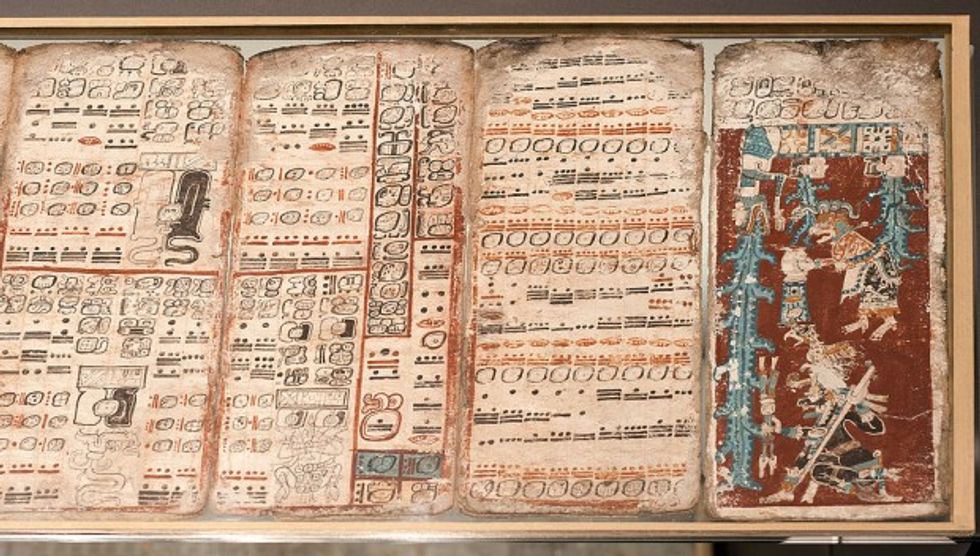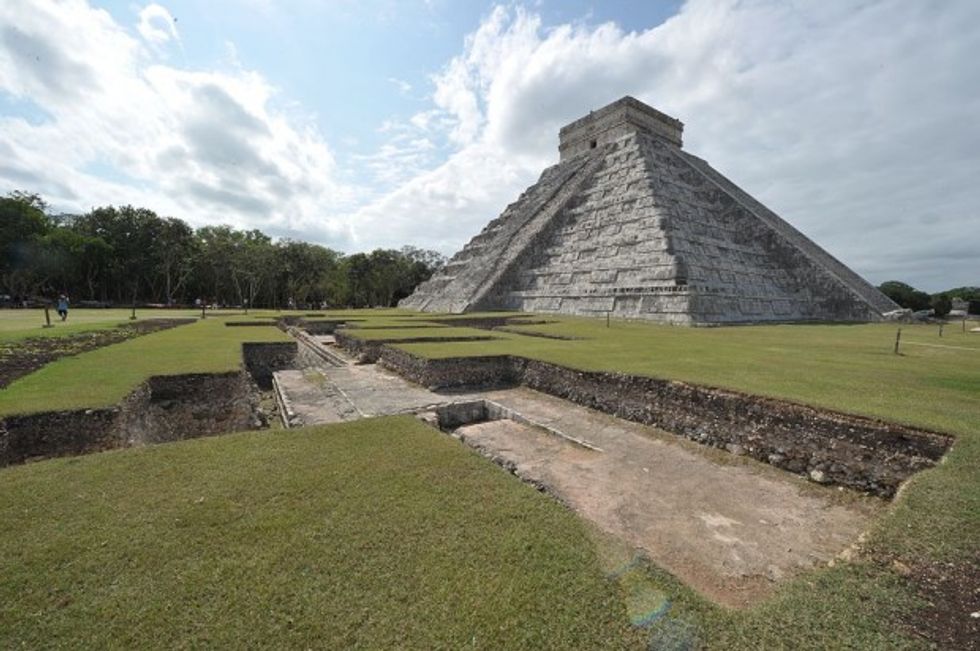
Twitter

A 15-year-old Canadian astronomer is believed to have discovered a forgotten Mayan city using an original technique he developed himself.
William Gadoury of Quebec told Canadian media that he studied Mayan astronomy and satellite photos to confirm his finding.
Gadoury came up with the theory that the Mayan people chose the location of their towns and cities based on their civilization’s star constellations. After testing his theory, the teen found that these cities lined up precisely with stars in major Mayan constellations.

“I was really surprised and excited when I realized that the most brilliant stars of the constellations matched the largest Maya cities,” Gadoury told the Journal de Montréal.
But after studying the star map in greater depth, Gadoury noticed that one city, which theoretically should have aligned with a constellation of three stars, appeared to be missing.
In the hope of solving the mystery, the young astronomer used satellite images he obtained from the Canadian Space Agency and then mapped on to Google Earth. Sure enough, he discovered the city where the third star of the constellation indicated it would be.
William #Gadoury, 15 anni, scopre un’antica città Maya grazie a mappe @google e all'astronomia. La @NASA lo premia. pic.twitter.com/gOjpy5s2ge
— Altri Mondi Gazzetta (@AltriMondiGazza) May 10, 2016
Gadoury named the city K'aak Chi, or “Mouth of Fire.” K'aak Chi, which has yet to be explored, is located in the Yucatan jungle.
Daniel De Lisle of the Canadian Space Agency told the Independent that due to the area’s dense vegetation, it has been a challenge to study. Thankfully, one curious teen found the challenge worth pursuing.
De Lisle added that satellite scans of the area show linear features that "stuck out."

"There are linear features that would suggest there is something underneath that big canopy," he said, adding, “There are enough items to suggest it could be a man-made structure."
Dr. Armand La Rocque of the University of New Brunswick explained that one image showed a street design and a large square, which could be a pyramid.
"A square is not natural, it is mostly artificial and can hardly be attributed to natural phenomena,” he told the Independent. "If we add these together, we have a lot of indication there might be a Mayan city in the area."
La Rocque shared that Gadoury’s technique could prove useful to archaeologists searching for other Mayan cities.
The Journal de Montréal reported that archaeologists have promised the 15-year-old they would bring him along on their excavations.
“It would be the culmination of my three years of work and the dream of my life,” Gadoury told the Canadian outlet.
The teen’s findings, which he will present at Brazil's 2017 International Science fair, will be published in a scientific journal.
Watch: